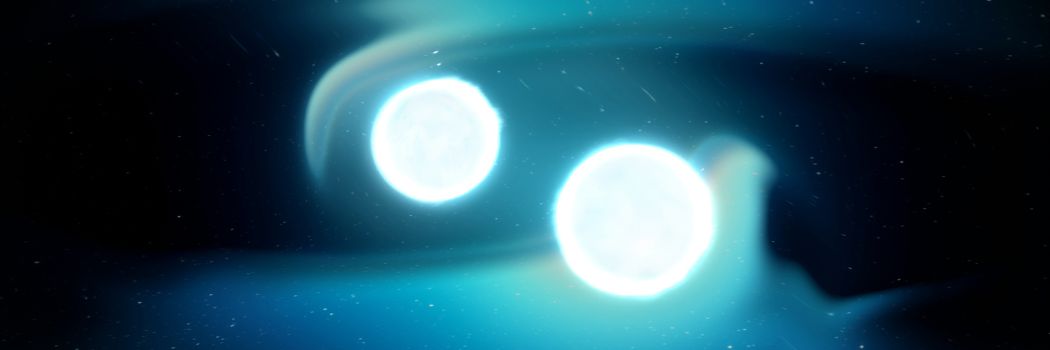Cosmic factory’s origins revealed

Our scientists have helped to shed new light on "factories" in outer space that produce elements used in the creation of planets, galaxies, and life.
A team of researchers, including astronomers at Durham University, sketched the back story of a neutron-star merger first seen in 2017.
Neutron stars, the collapsed cores of massive stars gone supernova, are among the densest objects in the universe.
When two neutron stars merge, an explosion called a kilonova forges elements such as gold, platinum, and uranium - the cosmic factory.
Binary stars
The 2017 merger took place 130 million light years away and involved binary stars – where two stars orbit each other.
Advances in technology allowed the detection of gravitational waves, ripples in the fabric of time-space, which are released as the stars spiralled into each other.
Information encoded in the gravitational waves and the light emitted by stars in the home galaxy of the kilonova was used by researchers in this study to calculate the binary stars’ likely life history.
“Cosmic Noon”
Born about ten billion years ago during “Cosmic Noon”, the most active period of star formation for our universe, each star was more than ten times the mass of the Sun, with the bigger of the two stars as much as 24 times larger.
The stars went through what scientists call the “common envelope phase” at least twice. This is where one binary star grows into a large red giant but the two don’t merge or lose much of their mass before ending so close together that they orbit each other within days.
This led to a lot of star dust being ejected from the system into space and brought the stars closer together.
This allowed them to spiral into each other at just the right time for humans to catch the gravitational waves in 2017.
Find out more
-
Read the full research paper, led by the University of Auckland, in Nature Astronomy.
-
Durham’s role in the research was led by Dr Anna McLeod in our Centre for Extragalactic Astronomy.
-
Our Department of Physics is a thriving centre for research and education. Ranked 2nd in the UK by The Guardian University Guide 2023, we are proud to deliver a teaching and learning experience for students which closely aligns with the research-intensive values and practices of the University.Feeling inspired? Visit our Physics webpages to learn more about our postgraduate and undergraduate programmes.
Main image: Doomed neutron stars whirl around each other in NASA visualisation. Credit: NASA.


/prod01/prodbucket01/media/durham-university/departments-/physics/teaching-labs/VT2A9034-1998X733.jpeg)